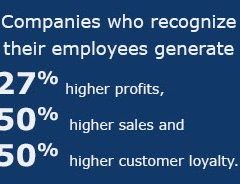10 Nov

Q- Are there any specific features that PMS must-have in today’s time? Also, in your long career, how has PMS helped you achieve business objectives?
Being an HR tool is just one of the elements in a PMS, probably 10 -15% of the system. ‘It is actually a strategic tool and it needs the commitment of the top leaders’. Therefore, as an HR leader, if you ask me, ‘Are you willing to consider a new system’, I will baulk, because I can’t get into a new system unless my culture is in place to handle that. And, once I have the system, I need time to get used to it. It takes time for my team members to get acclimatized to and to understand the ramifications of each of the features and to get dividends from it. So typically, a Performance Management System is not something you change every two or three years. I remember when I went shopping for different kinds of technology solutions. I think we looked at a few software solutions, none of the solutions met our criteria. For example, when we translate our goals into measurement parameters, how do we measure? We found that our own leaders needed to ensure that they are measured on multiple parameters. One is the balanced scorecard which is more performance-driven. The second element is in terms of their own capabilities, or as we call them, competencies. ‘We had to define competencies for each of the roles. And then competencies reflected in terms of behaviors. You can’t get into a performance management system without a clear definition of these competencies’. An important element was our guys, who were all premier guys. With the best-pedigreed qualifications and excellent track records, they believed that they couldn’t fail. They also felt they were answerable to no one. So, bringing in different perspectives to measure their own tracking of performance and leadership, we brought in something called a ‘People Poll’ where the team members would assess if the manager is good enough on parameters, the same parameters which their managers used to assess them.
“It is extremely important that organizations link employees’ performance, competencies and career development”
Then the horizontal functions like the technology teams, HR teams, finance teams, all of us could rest on their laurels and probably become power blocks. Our PMS had something called a ‘Service Poll’. If we really needed to adopt a service-oriented culture then all of us needed to be assessed, based on the services we provide. Different teams provided different services to different levels of the organization. The top-level may look at us for a lot of strategic perspectives, the middle level may look at us for a lot of operational support, and the customer-facing teams may look at us for inputs in terms of their own and their teams’ development. The poll needed to be customized to derive input that is relevant to the audience. These polls can’t follow a ‘one-size-fits-all’ approach.
So, we would bring that perspective in. Ensure that each of these has a play in terms of the leader’s assessment and the assessment of each of the employees. While bell curves are out of favour today, at that point in time, we looked at bell curves. But then, we didn’t enforce the bell curve but used it more as an educational tool. We said that we would educate people to differentiate. Having said that, no HR guy will ever touch a rating given by a leader for any of his team members. Because the moment you do that, you’ll very soon have a situation where the manager is not in charge. So, the boss has to plead helplessness to the team members in terms of deciding their eventual ratings, so ownership gets impacted. That’s the criterion that one needs to look at in terms of what to measure and how to measure with a leadership perspective. And then to the question of different kinds of data and how we look at the data.
Q – That is really interesting, how were the metrics you mentioned measured?
The data we had at our organization at that time was actually a forerunner to things today. Definitely, all of it may not have relevance to us today, but many of the aspects continue to be relevant. There was a huge challenge in terms of how we looked at this entire framework, in terms of measurement.
Once the goals came in, the CEO would come and share his goals that were agreed to by the Board with me, and all the other directors, He’d say “I want you guys to figure out what you need to do to ensure that I meet these goals”. And we used to do likewise with our team members and that’s the way the whole organizational goals were cascaded down. And then, we would trim it down to ensure that we had a bare few. We then connected the two pieces and said, we need to look at the competency framework to deliver on those goals.
We ensured that the performance framework is looked at from a bonus perspective, which is a part of the variable pay component. We looked at the competency framework from a perspective of development, promotions, elevations and other areas, and consequence management.
Q – What are some changes that you and your team brought about in these organizations? And how were these driven?
I remember when I joined one of my organization, we had a culture where increments were given to employees in a financial year, starting from April to March. Increments, increment letters, promotion letters came in sometime during July. That itself showed a lazy organization. If you are okay with one quarter being missed before a role promotion is given, or before a person is compensated, that means even your goal setting is probably delayed by a quarter!!
“Adoption of technology in organizations can be increased only if senior leaders are serious about it”
So, we came up with a discipline saying, “We need to ensure that the promotions happen at the beginning of the year” if it was a yearly affair. There could be in between promotions as well, but definitely, if there are elevations, they needed to happen at the beginning of the year. Increments must be paid in April, and the letter should be given in the first week of April. We had a lot of resistance, and when there is resistance, that’s when you stay firm and tell them, “This is our culture” That’s where you need top leadership support. Without that, this would not work. No system can drive culture. Culture needs to be driven by leadership. Once the leadership drives the culture, then everyone falls in line.
Then our financial year changed from Jan to Dec. We ensured that performance bonuses were credited in January for the previous year. Performance needs to be a metric. A very clear metric, a very clear system, that also gets linked to the compensation and benefits. Especially in terms of the variable pay. In the increment letters, the merit increases, etc. would happen in April, but the variable pay would be paid out in January, and that’s a dual-track – where we had competencies to measure one element, and we had the performance scorecard to measure the other element.
Q – That is very well put, “Performance needs to be a metric”, do you feel the process of feedback has changed in accessing and enhancing team performance?
‘In today’s world, the ability to get feedback and data is almost instantaneous’. You have leaders who can really trigger off these conversations on how people are performing much more frequently. I struggled, let me be honest. I struggled to get conversations going for more than a year, and then getting those done in time itself was a huge achievement. ‘Today if conversations don’t happen every quarter, then I think organizations have lost’. Especially so in project-based organizations. I’m right now consulting with a very large organization and a lot of the coaching happens throughout the entire year. And this is executive one-on-one coaching. And one of the big fears of leaders is ‘How do we go across and give feedback? Because then I run the risk of low morale through the year’.
Q – It’s good that you brought in this element of coaching. Things have changed very fast in the last ten or fifteen years. Earlier, coaching and career development were not something that was part of performance management or annual appraisals. Do you think they are getting integrated with the whole quarterly or annual appraisals system? As you rightly said – data availability is instantaneous, and the ability to communicate is also instantaneous today. Do you see that organizations are looking at systems that allow them to combine and integrate all of these? How effective and important is that?
My view is that it is very, very critical. The key question of how we can improve. To illustrate, I am working with India’s largest engineering and heavy-duty organization in coaching for the last ten years now. Every year, we get a select set of leaders whom we need to coach, right through. There are capabilities, and there are competencies for that particular level – but they actually come for coaching to us for the next level competencies. To get to the next level, they need help. Because they are good performers, they’d have been assessed as high raters for the last two or three years. Each of them handles portfolios close to a thousand-crore annual turnover. They typically need to be trained on the next level competencies, competencies that have been defined at the organization level.
Our role is basically to evaluate them on these competencies and then to help them through a series of workshops and one-on-one and group coaching sessions. And handhold them through a live project right through 8 or 9 months. And this is part of the entire performance management system – it is only after this is done, that they go through a formal next level. It’s a precursor to their elevation to newer and higher-level roles. So, this is integrated into both the talent development and talent incubation, which is an outcome of the conversations we have on how we can improve.
Q – That is so true. It is therefore critical that in addition to having goals that flow down from your CEO to your department heads and your practice heads and others, you also need to make sure that your appraisal or your assessment of how employees are performing to reflect on their areas of development.
Yes, and therefore, the need for competencies. So, it can’t be just a performance contract or a balanced scorecard. That is still just a metric. Here we need to look at the intangibles, the soft stuff. Which is where you really need to look at, to see how we can improve.
We are also consulting over the last eight years with an American technology company, with large operations in India. One of the things that we do for them covers talent incubation. Talent incubation happens at different levels and looks at how we can really tune in each of these capabilities as they keep going up. They have clearly ensured that there is no linkage of performance management to compensation. They don’t believe in this linkage. They’ve done away with it.
It’s all about conversations. They call these “retros”. A ‘retro’ is a conversation of what has happened, and a ‘feed-forward’ is a conversation of what needs to happen. To trigger this particular conversation, the performance management system helps. Each of the leaders is trained in terms of how to give this kind of feedback. Looking at team-level feedback, and they have team-level goals and they don’t gear into individual-level goals at all. The gear into team-level goals only. There are team-level goals, and individual competencies, that’s it. Then you look at it very differently. Then the team itself says this guy came across this way, or he didn’t come across this way. And let me tell you, consequence management in a team setting is even more swift than in an individual setting. The team itself will say, “We don’t want this guy.” Or they will say, “This guy is new, we are not spending enough time, we don’t have the bandwidth, we perhaps can’t handle this kind of an incubation period.” Therefore, we need to look for this particular talent profile.
Q – Right, so the other part of performance management – not just the system but the whole process, traditionally – is something that’s seen as a burden by both the managers and the employees, right? And, therefore whatever technology you introduce, the usage and the adoption of those technologies or processes is not very swift. You really struggle to get to high levels of adoption. So, how do you think companies can ensure that employees’ adoption of the PMS can be increased?
‘For employees, technology is never an issue. The issue is the culture. In organizations where implementation is not swift, it is because of the weak culture of a performance-based meritocracy at senior levels’. If the senior level pushes it across, any team member will pick up any technology and move it through. We have seen that repeatedly – technology is not the issue, the employee is not the issue – if the employee is told ‘this is the way we do things around here’, they fall in line in no time. The problem is when the senior leadership does not adopt a stand to say, ‘this is the way we will do it’, I also do it this way from my side. Senior leaders need to walk the talk. If they can’t walk the talk, you can’t implement the system.
Q – That is quite interesting. Any examples of how bringing in these structures or systems to align goals and manage performance and give feedback have helped organizations to grow and benefit?
Any organization that comes out with automation or tool needs to have an accompanying consulting practice. This consulting practice needs to help organizations to streamline and put a discipline in place. If you don’t have such a consulting practice, the tool itself will not deliver. And the danger here is that while the tool may seem very smart and people buy it, its usage will reflect on whether it is central to the organization or not. Just as software companies have business analysts, for a tool like a PMS to be really implemented, it needs to have a very strong consulting practice that is engaged to ensure the outcomes. As an HR leader, I used to always baulk from adopting readymade solutions. Readymade solutions rarely fit the culture of an organization. Therefore, fitting an organization’s culture into the template of software becomes a struggle. One needs consulting to make that connection and make the organization understand the benefits of the usage. So, that is the challenge with performance management systems. That’s the reason why they are very difficult to change. Four or five years ago, we heard of how GE and Microsoft abandoned the bell curve. But 95% of organizations are unable to do so. This could be because of how some intelligentsia and people in power have benefitted from the bell curve. They don’t want it to be given up in a hurry. Very often, performance management system blocks are because there are people who are benefiting from the current system, whether it is haphazard, subjective, objective, whatever. They will be your prime blocks. So, your first target is to figure out who are the guys who are benefiting from the established system. 90% chances are, they will be somewhere at the top. Which is probably why the existing system has flourished.
Q – You have gone through the transformation of bringing this system and technology as well in your organization, and also when there was a huge growth in terms of the size of the organization. Can you give some insights on how these systems helped you in managing that transition, from being a 200 people organization to a 2000 people organization?
During the growth phase, we had to hire large numbers with different competencies/skill sets. Each of these required different strategies. This is where the performance management system is such a useful tool. We took different approaches to both these recruitment needs.
“A performance management system helps define performance metrics that helps in recruitment, training as well as compensation structure”
We used the balanced scorecard approach and we looked at team-based goals and we looked at team-based incentives, apart from individual incentives. For the sales roles, we clearly said we don’t want to have these guys on our rolls. We want them on an outsourced basis, but on a retainership contract with us. We trained them and designed a compensation structure for them that incentivized them to perform. We wanted people who could be trained into the entire mechanism. For the analytics process, we needed a team that could manage big data processing using a model. So, we established a different set of metrics for them. We also wanted to reduce the cost per analyst. To achieve that, we re-engineered the entire job. We hired professional people with writing skills and hired analysts only for the analysis. So, the analyses were written by professional writers, trained as an analytical writer. We actually brought down our costs there. But mind you, all of them had their metrics whether it was outsourced or insourced. And each of these enabled us to cascade and come up with role definitions and quickly come up with performance definitions. Without our performance management system, we couldn’t have done this.
Q – I suppose the focus on competencies would also have helped. Because you knew which competencies to outsource and which ones to keep within.
Yes, absolutely.
Q – I’d like to know if there is anything specific that is a must-have when it comes to a Performance Management System – like planning an expectation setting or maybe monitoring – or periodic reviews.
The 4 conversations that I mentioned earlier, are critical in any PMS. These you must have. The mechanics of it needs to be tweaked based on the organization. And wherever there is no discipline, they need to be educated by an external consultant. Priority must be given by the CEO. Everyone else will have to follow the CEO. No other internal employee can demand that.



